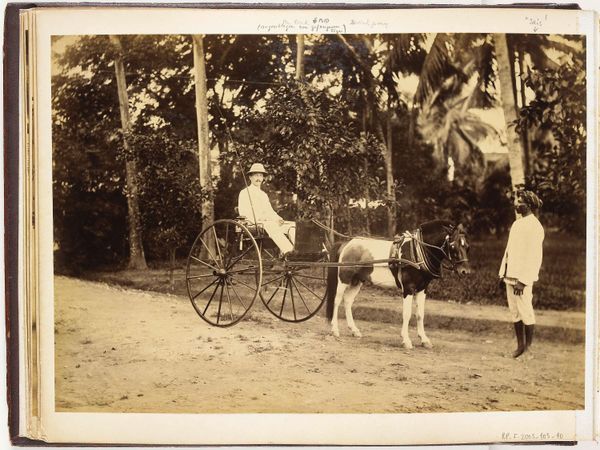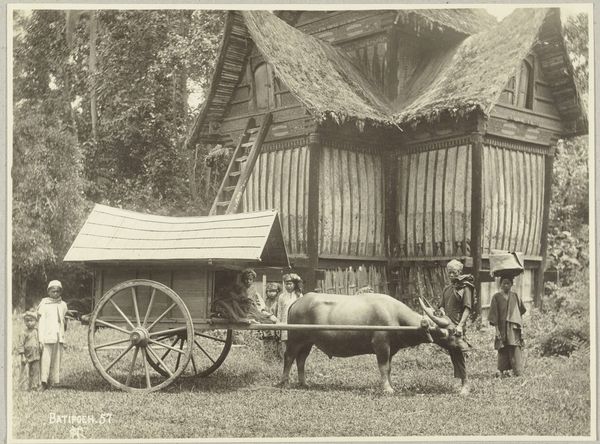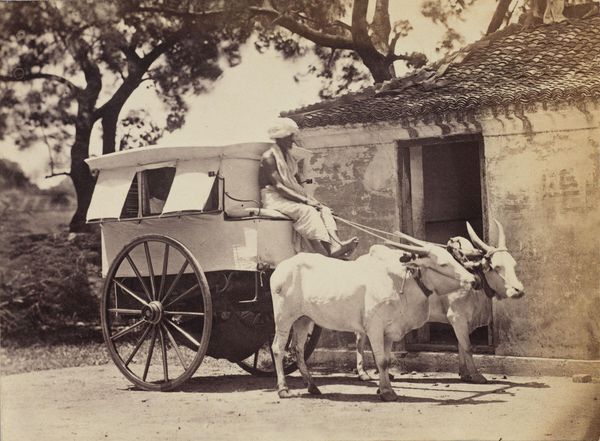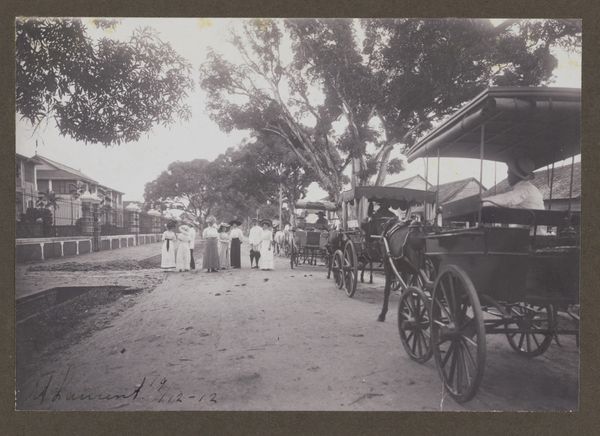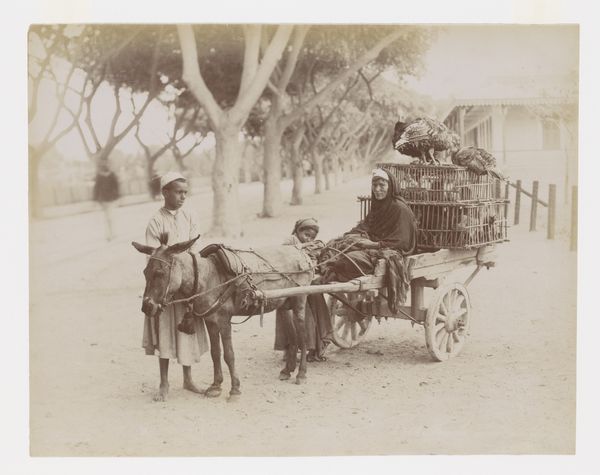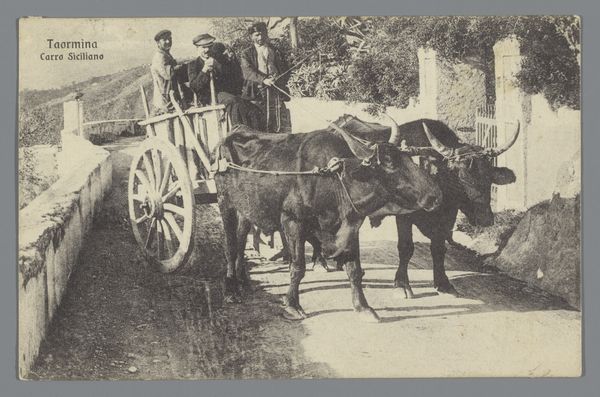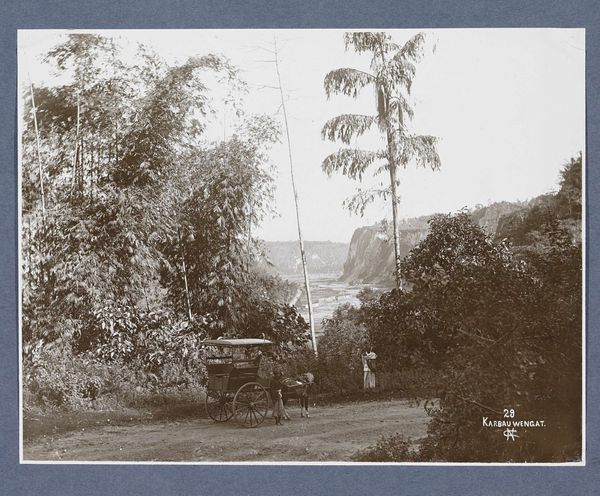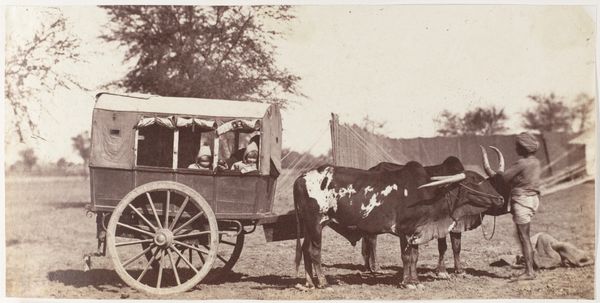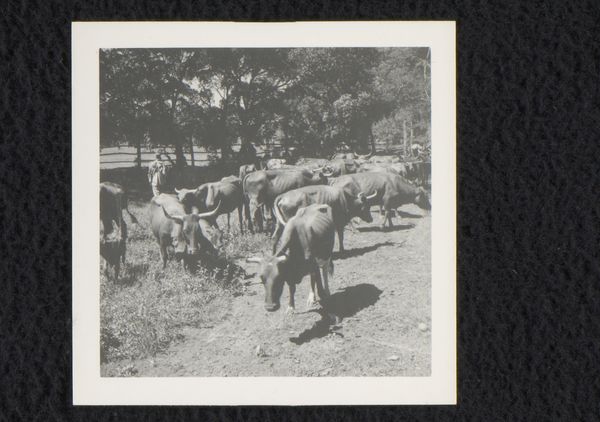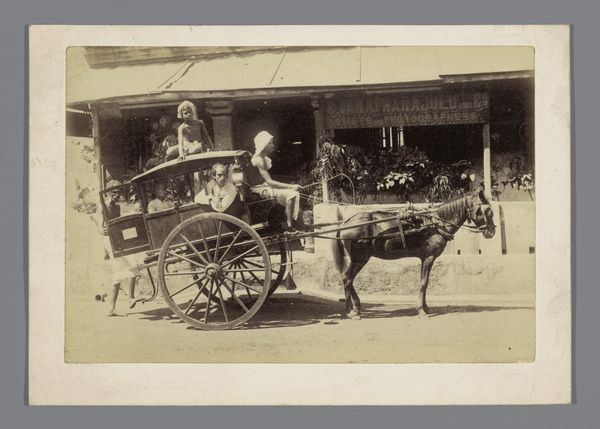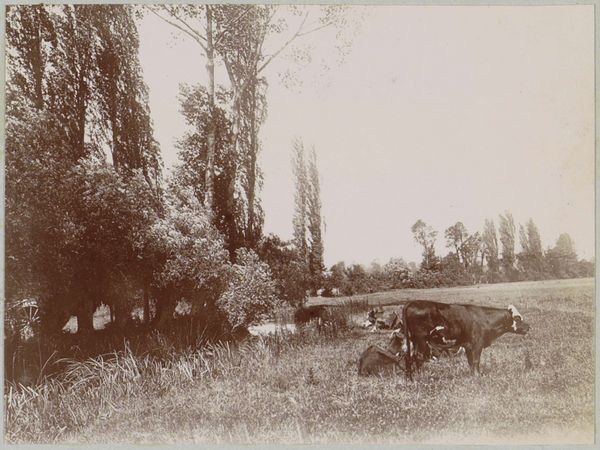
photography, gelatin-silver-print
#
portrait
#
landscape
#
photography
#
coloured pencil
#
gelatin-silver-print
#
traditional art medium
#
19th century
#
genre-painting
Dimensions: height 174 mm, width 233 mm
Copyright: Rijks Museum: Open Domain
Curator: This gelatin silver print, titled "Rijtuig op ijzers voortgetrokken door ossen" or "Carriage on irons drawn by oxen," is attributed to Manuel de Olim Perestrello and dates roughly from 1880 to 1920. Editor: My first impression? It's wonderfully strange. A sled-carriage contraption being pulled by oxen – an unusual juxtaposition of progress and tradition, somehow both grand and comical at the same time. Curator: Indeed. The imagery of oxen powering this odd carriage allows us to look at ideas of class and labor, thinking of it as a critical statement on modernization versus indigenous transportation within a colonial landscape. We have these European-style innovations, juxtaposed against the labor and traditions of what I imagine to be a very different society. Editor: Right, and I see that too. But the oxen, for centuries symbols of power and labor are here recast into this domesticated mode. The addition of what I read to be a sled – an artifact designed for use on snowy surfaces – adds another dimension to the relocation and the memory it might embody. Curator: That contrast speaks volumes, doesn't it? Were this location once covered in snow? I love the subtle hints towards economic dependencies built around land exploitation and unequal labor systems embedded in the technology displayed here. These local figures – are they workers or perhaps even owners of the means? Editor: And consider the elaborate filigree on the carriage itself. Wicker suggests an era of great luxury, contrasting so sharply with the inherent earthiness connected with the oxen. It shows an odd status display… it’s this very hybridity—technological, social, and even environmental—that resonates, an exploration of complex, and somewhat obscure symbols of relocation and displacement. Curator: I agree entirely. It pushes us to question not just what we see but also what narratives are obscured. And in the end what this relic means to those who are connected. Editor: Ultimately, for me, this photo distills into a powerful reflection on lost cultures, lost dreams even. An eerie still life. Curator: Yes. It forces a confrontation with histories so complex and so fraught with the weight of progress, the losses are keenly felt.
Comments
No comments
Be the first to comment and join the conversation on the ultimate creative platform.
